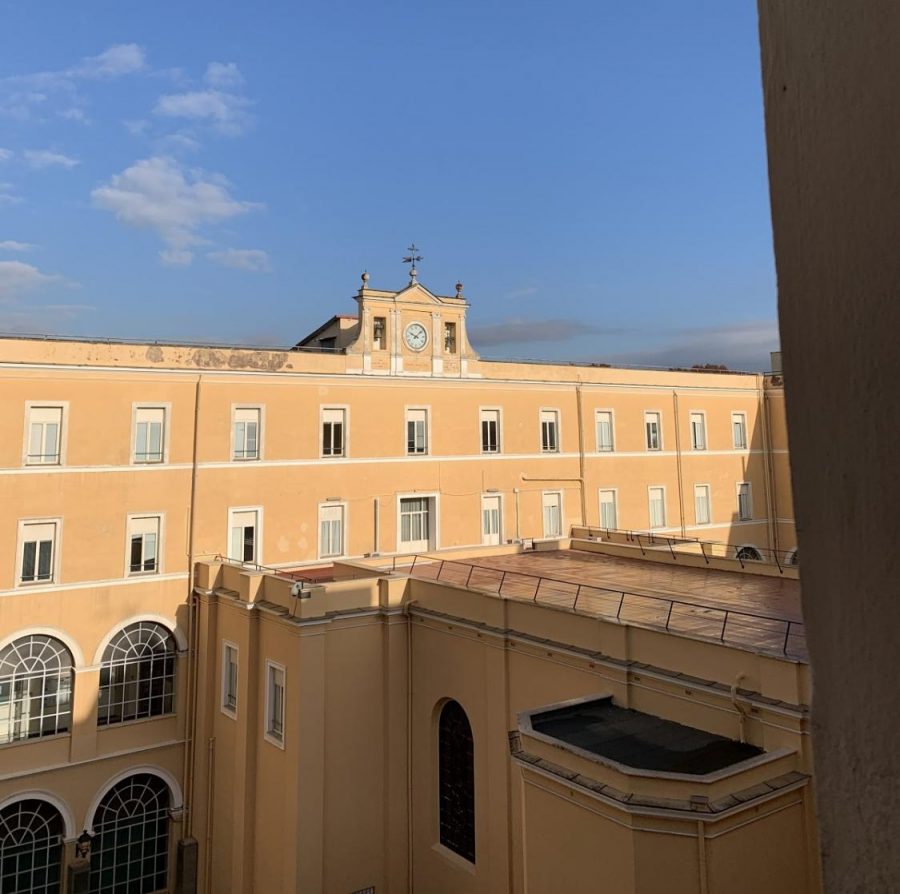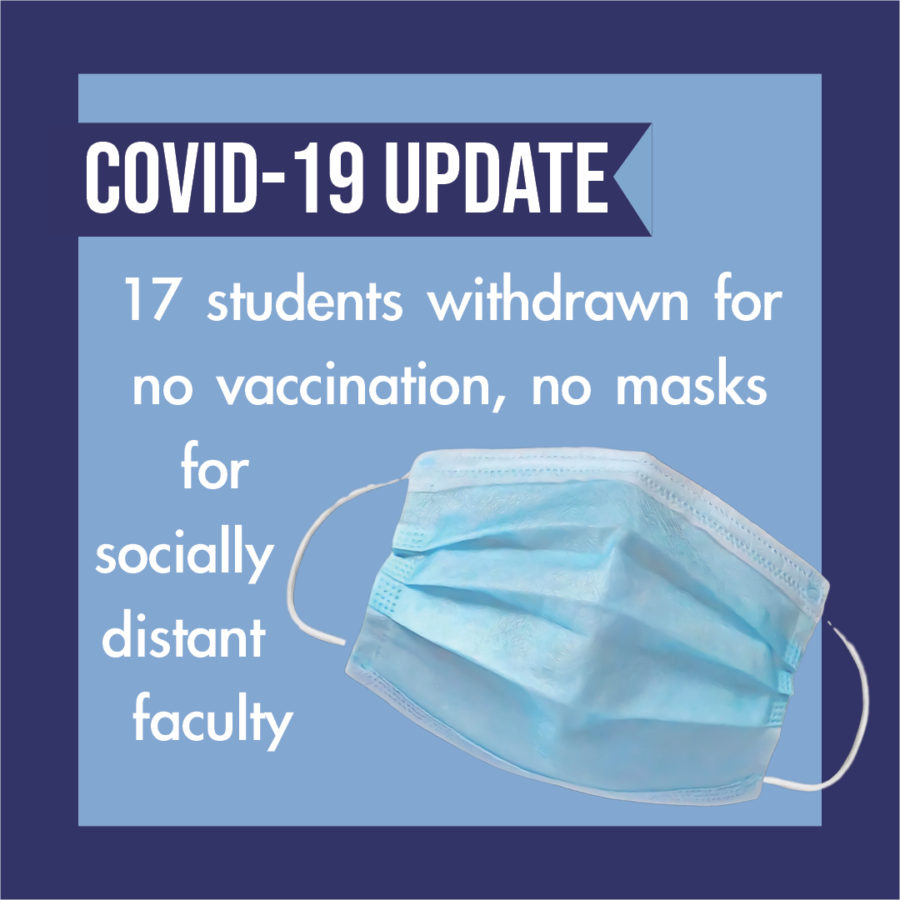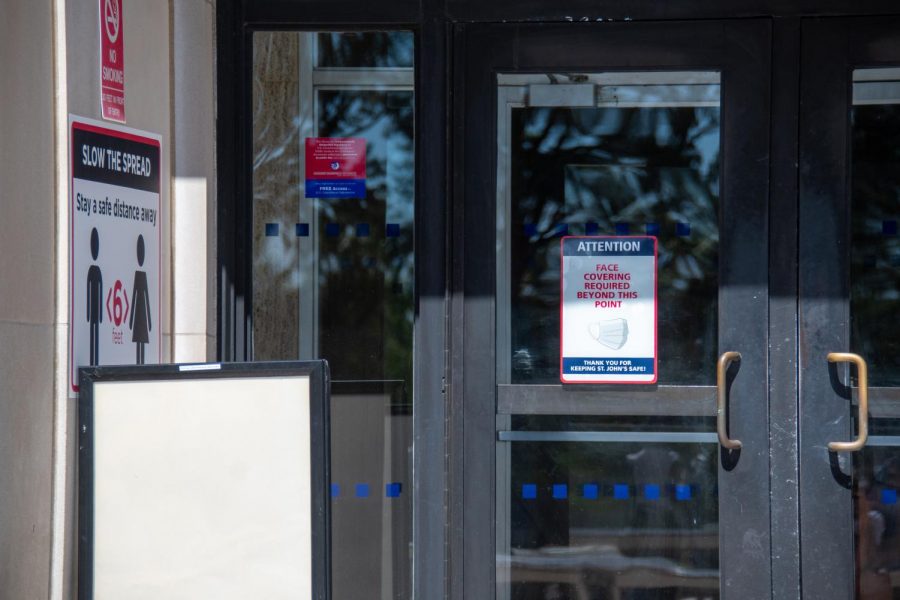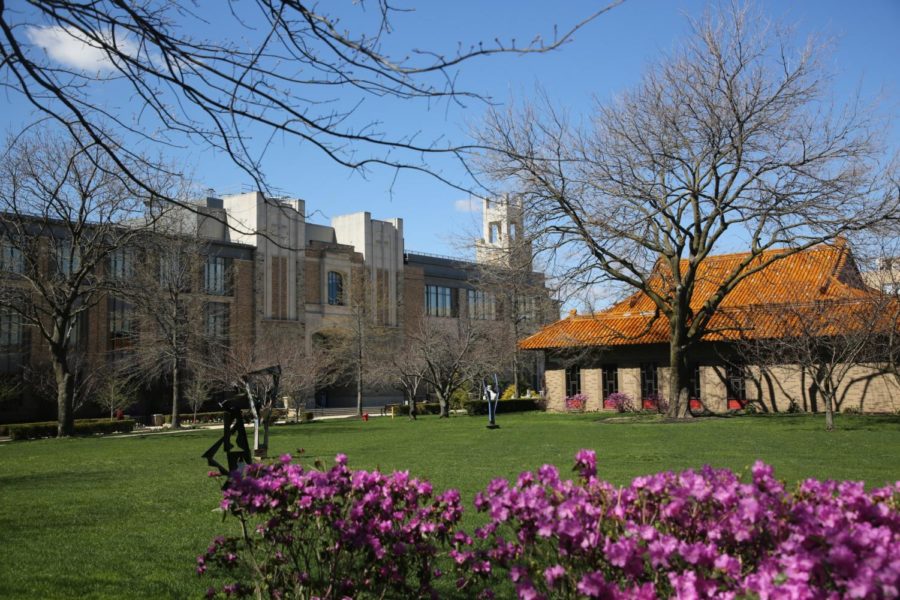The streets of Rome were always bustling with pedestrians, regardless of the time of day. Local cafe owners opened up their doors before sunrise to welcome locals on their way to work – Italians would pack the bar counters in a matter of minutes to throw back some espresso and seal it off with a few bites of a croissant. Then in March, the doors shuttered. Locals would not converse over breakfast for months to come.
The COVID-19 pandemic caused everything but grocery stores, banks and pharmacies in Italy to cease operations – including the St. John’s University Rome Campus. Businesses all over the country and along the street where the campus resides, Via Marcantonio Colonna, closed their doors; shops were shut down almost immediately and the city’s bustling bars and restaurants just blocks away were vacated as quickly as they were filled to capacity just days before.
“It was incredible to see a whole country being put on lockdown, and while people were initially stunned by the severity of the adopted measures, they quickly adapted and responded very consciously and responsibly,” Massimiliano Tomassini, assistant vice president of Europe Programs at St. John’s University, told the Torch in an email. “Cities were empty while people stayed at home trying to approach the whole situation with the usual Italian spirit.”
That was back in March, just after students studying abroad for the spring 2020 semester were sent back home after being in Europe for a little over a month. The entire Rome campus had to be evacuated, and both students and administration had to move quickly — President Donald Trump’s March 12 ban on travel from Europe would severely affect incoming travelers trying to enter the United States, even if they were citizens.
“Every student, whether undergrad or grad, had to be evacuated, and we offered all students a return home to ensure their safety,” Tomassini said. “Although that return home was the right move to safeguard students, it was very sad and frustrating to have to end their study abroad experience prematurely. Even in normal times, it is sad to see students leave at the end of the semester, so it was even harder under such extraordinary circumstances.”
Amanda Murray, a junior participating in the Western Europe Pharmacy program for the spring 2020 semester had just arrived in Rome for the second rotation of the program when she learned her time abroad would soon be coming to an end.
“I knew the pandemic was getting serious when the university cancelled all events and service opportunities hosted through the Rome campus,” Murray said. “Understandably, I found myself in a bit of denial that all the cancellations were happening in real time.”.
“Leaving Rome felt weird, almost like COVID-19 should not be a worry,” she continued. “There wasn’t the mandate to wear masks and life was still carrying on relatively normal up until my last day.”
Italy was one of the first countries after China to face the onslaught of COVID-19. The world watched as cases rose, angry Italian mayors yelled at citizens to stay home and the country entered into a nationwide lockdown; but no one was aware how quickly the situation would evolve into a global pandemic. Fast forward six months later and we’re left wondering what the future of Study Abroad will look like.
On the streets of Rome, navigating the pandemic has brought its fair share of challenges. Local businesses are struggling, and Tomassini says some prefer to stay closed until things can return to normal. But what exactly does that return to normal look like for the St. John’s Rome campus? The situation is ever-changing but the Office of International Education (OIE) is hoping to resume operations relatively soon.
“OIE does plan to run Spring 2021 semester programs at St. John’s locations in Europe, and we’re currently working with our global partner institutions to assess which exchange programs remain viable for the coming term,” Gregory Bruhn, director of Outbound Programs at the Office of International Education told the Torch in an email.
“One option we are exploring for the European semester programs is to start the spring semester with 5 weeks of online courses, followed by 10 weeks of courses abroad,” Bruhn said. “The shortened format would allow U.S. citizens and those from other visa waiver countries to avoid the normal student entry visa requirement, and will allow us more time to prepare for their arrival under the current guidelines set out by each country.”
Bruhn says students would also have to comply with the public health protocols in place in each respective location; for students in Paris that means providing proof of a negative COVID-19 test result, for students in Rome that means quarantining for 14 days upon arrival, among other things. However, these protocols are all subject to change.
“If we were to have students on campus right now, classes would have decreased capacity, residence rooms would likely be reduced to single occupancy, masks would be used throughout the campus and people’s temperature would be measured with an infrared thermometer every time they entered the site,” Tomassini said.
While students that traveled abroad during the fall 2019 semester as part of the Discover Italy semester program enjoyed school-sponsored field trips and other group travels without social distancing protocols, the future of student programming at the St. John’s University Rome campus remains unknown, due to the uncertainty of health protocols in the coming year.
As for short-term abroad options, they have been suspended for Winter 2020 and Spring 2021 due to travel advisories and quarantine restrictions. However, Bruhn says OIE hopes to have a final announcement of the future of semester-abroad programs soon.
















